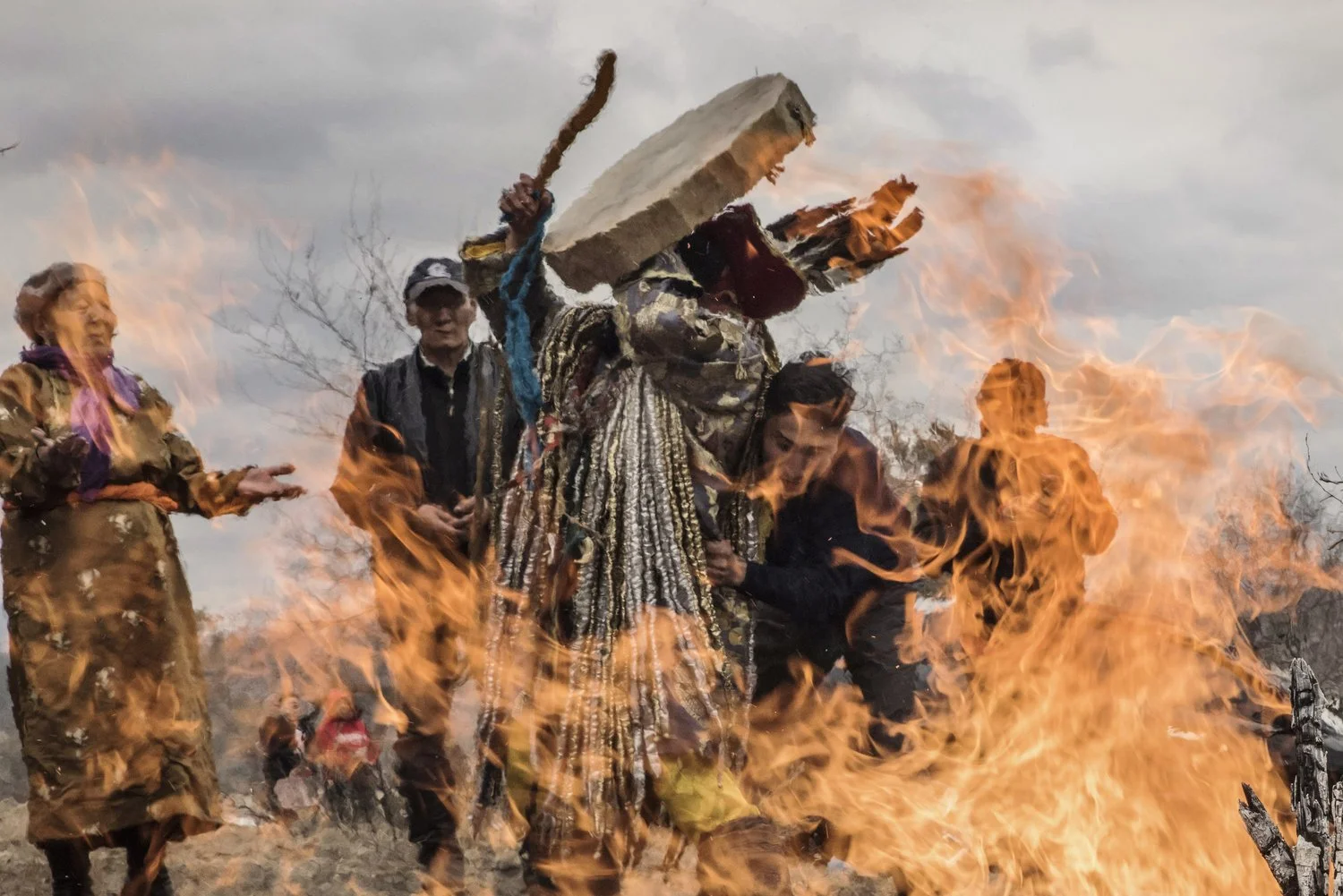spirits of mongolia: the untamed shamanic heritage that's still thriving today
deep in the northern forests of mongolia, isolated from others and dwelling in small camps, are a nomadic group of shamans who’s way of life revolve around herding and raising reindeer. they are known as the dukha people, and are just one branch of a long and complex shamanic tradition that is still prominent in the lands of mongolia. it is rare to find such a culture, still so rooted in its indigenous practices and beliefs, and today their way of life reminds us of the possibility of a people connected to the environment, and authentic in their heritage.
although the country of mongolia has gone through many changes, the shamanic tradition has still managed to maintain its roots. while under the dominion of the soviet union, shamanic rituals were practiced underground, in secret, before re-emerging as a powerful expression of identity in the 1990s. its co-existence with buddhism also makes it particularly interesting. while many stuck to their shamanic roots, some merged interests with the buddhist path, creating a branch of shamanism known as ‘yellow shamanism’. the history of this period is reflected in some of the unique buddhist temples, of which there are many in the country. although buddhism is the recognised religion in mongolia today, it exists alongside shamanism and its unique practices.
at its core, shamanism in mongolia is a form of animistic worship, centered around the belief that every living thing is alive and possesses unique spirits and characteristics. The tribes worship the sky, ground, water, the animals of the earth, and their ancestors. In the tradition, there are also 99 deities, associated with different elements and kingdoms of the sky, sun, and heaven. they are not all pleasant; while 55 of them are favourable towards humans, the other 44 are said to cause unpleasant circumstances. today, their complex rituals are conducted in order to establish a good connection with the earthly and heavenly spirits, and receive their protection in return. the rituals can last for many hours, and there are numerous rites associated with certain deities or elements, like mountain rites, spring rites, or horse rites. their mythos is very rich, with different categories of spirits, planets, and types of psychic powers.
image credit gilles sabrié





